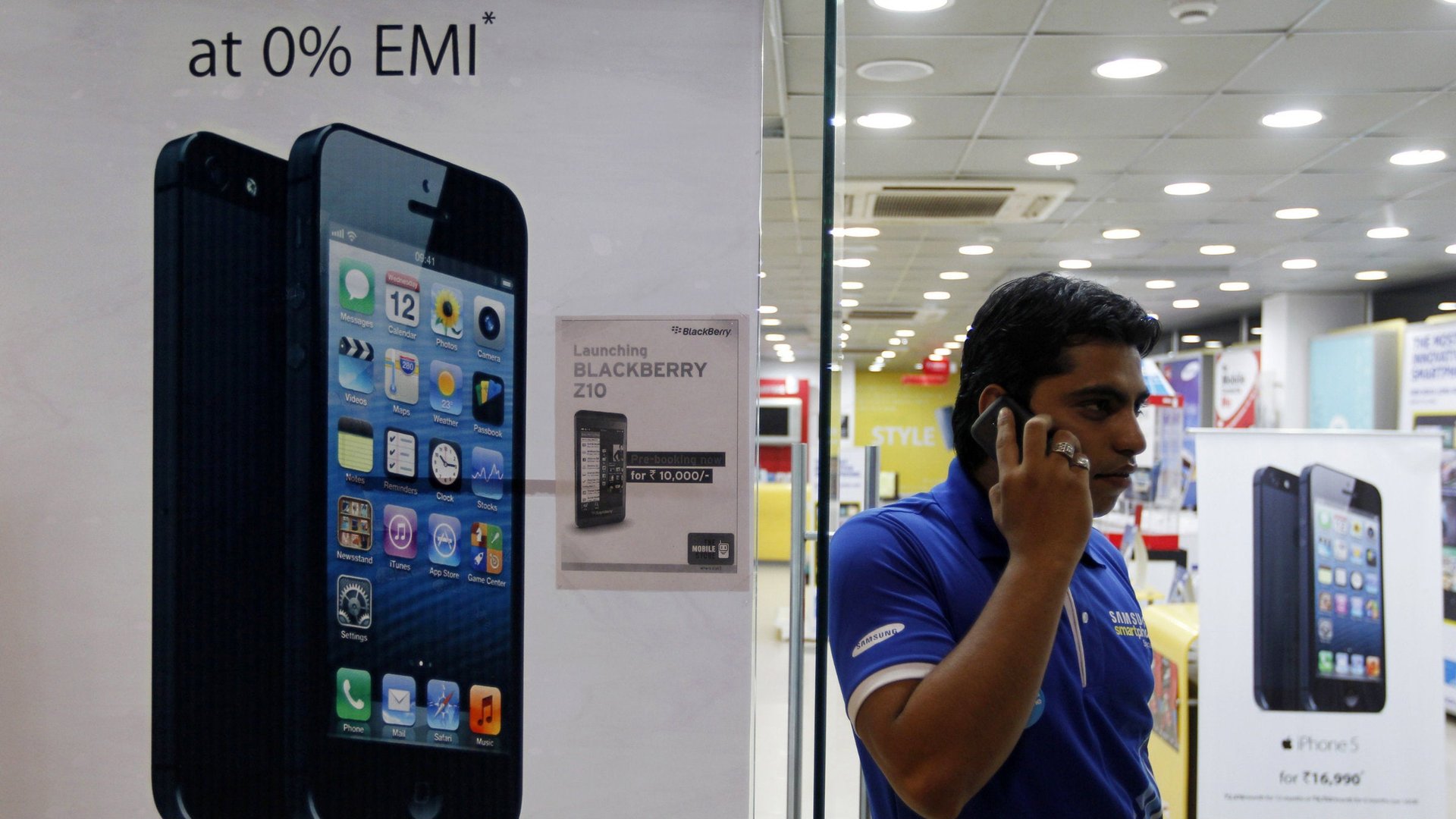Apple’s admitting the “cheap” iPhone 5c failed by bringing back the iPhone 4
Would you pay $320 for a four-year-old smartphone? Apple seems to believe that aspiring consumers in emerging markets will. The company has reportedly restarted manufacturing the iPhone 4, which it discontinued with the launch of the iPhone 5s and 5c models late last year. So says the Economic Times, an Indian business newspaper, which cites “three senior executives with direct knowledge of the company’s plan.” Apple will sell the iPhone 4 only in India, Indonesia and Brazil, according to the report.


Would you pay $320 for a four-year-old smartphone? Apple seems to believe that aspiring consumers in emerging markets will. The company has reportedly restarted manufacturing the iPhone 4, which it discontinued with the launch of the iPhone 5s and 5c models late last year. So says the Economic Times, an Indian business newspaper, which cites “three senior executives with direct knowledge of the company’s plan.” Apple will sell the iPhone 4 only in India, Indonesia and Brazil, according to the report.
Selling smartphones in emerging markets is a tricky proposition. Many of these markets don’t have the system of one- or two-year contracts that subsidize handsets common in the West; people pay full price for a phone upfront. Moreover, consumers want cheap phones but also want cachet. Companies have a hard time finding a balance between the two. Apple tried offering 0% interest financing and buy-back schemes, allowing it to retain a high sticker price (for the cachet) while in practice selling phones at a discount. Indeed, the company kept its price steady in India despite a massive fall in the value of the rupee late last year, effectively accepting lower margins.
The iPhone 5c was meant to solve this problem. Offer people a brand new device at the same price as older models and they should in theory snap it up. Instead, the exact opposite happened: Consumers across the world—not just in developing countries—saw the “cheap” iPhone 5c as simultaneously too expensive and insufficiently exclusive. They rushed to buy the more expensive iPhone 5s instead, catching Apple by surprise and causing supply problems.
The limits of a brand
All of which explains why Apple would be willing to do something as out of character as to bring back an older model. Indians will buy some 225 million smartphones in 2014, according to a recent forecast, 92% of which will be to first-time buyers. Brazil and Indonesia will between them buy nearly 100m smartphones. Many of these new customers will know and admire Apple, and a phone priced at Rs 20,000 ($320) might be just the thing to turn them into Apple loyalists for their long lives as consumers of phones and apps.
Or it might not. These consumers also have a wealth of options, including new, much cheaper devices from Samsung and LG, many local manufacturers selling cheap phones with all the bells and whistles, and new entrants such as HP. Moreover, older iPhones tend not to react very well to iOS 7, the latest version of the company’s smartphone operating system. That means the phones will either work badly or run on the very different-looking iOS 6, emphasizing how old they are. Either way, consumers in India, Brazil and Indonesia will have to make a choice between a four-year-old phone from Apple and a powerful new one from a less desirable brand. It will be a test of Apple’s marketing prowess.
Apple did not respond to a request for comment.